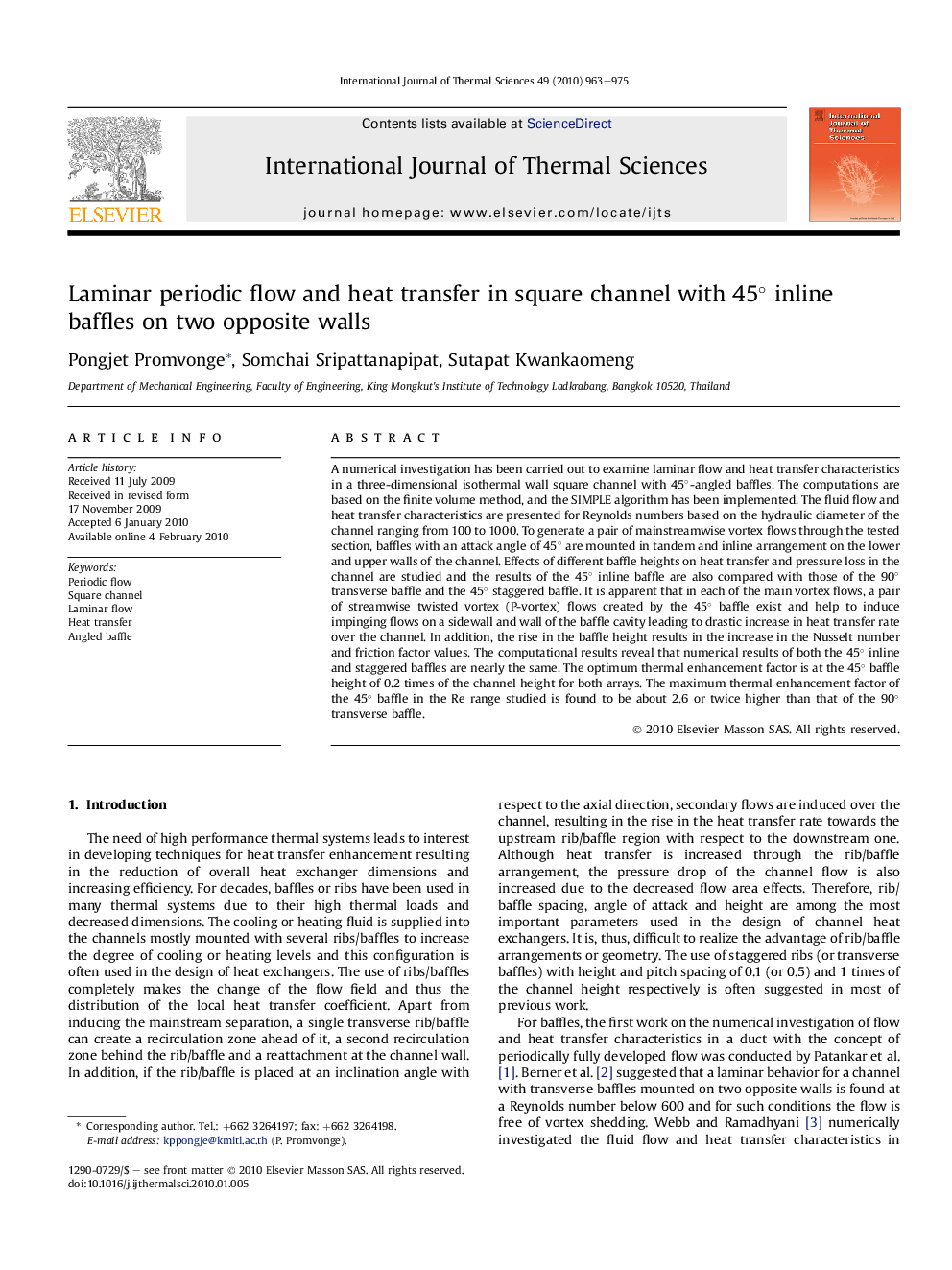| Article ID | Journal | Published Year | Pages | File Type |
|---|---|---|---|---|
| 669120 | International Journal of Thermal Sciences | 2010 | 13 Pages |
Abstract
A numerical investigation has been carried out to examine laminar flow and heat transfer characteristics in a three-dimensional isothermal wall square channel with 45°-angled baffles. The computations are based on the finite volume method, and the SIMPLE algorithm has been implemented. The fluid flow and heat transfer characteristics are presented for Reynolds numbers based on the hydraulic diameter of the channel ranging from 100 to 1000. To generate a pair of mainstreamwise vortex flows through the tested section, baffles with an attack angle of 45° are mounted in tandem and inline arrangement on the lower and upper walls of the channel. Effects of different baffle heights on heat transfer and pressure loss in the channel are studied and the results of the 45° inline baffle are also compared with those of the 90° transverse baffle and the 45° staggered baffle. It is apparent that in each of the main vortex flows, a pair of streamwise twisted vortex (P-vortex) flows created by the 45° baffle exist and help to induce impinging flows on a sidewall and wall of the baffle cavity leading to drastic increase in heat transfer rate over the channel. In addition, the rise in the baffle height results in the increase in the Nusselt number and friction factor values. The computational results reveal that numerical results of both the 45° inline and staggered baffles are nearly the same. The optimum thermal enhancement factor is at the 45° baffle height of 0.2 times of the channel height for both arrays. The maximum thermal enhancement factor of the 45° baffle in the Re range studied is found to be about 2.6 or twice higher than that of the 90° transverse baffle.
Related Topics
Physical Sciences and Engineering
Chemical Engineering
Fluid Flow and Transfer Processes
Authors
Pongjet Promvonge, Somchai Sripattanapipat, Sutapat Kwankaomeng,
